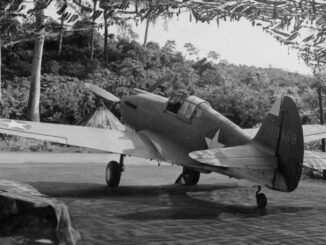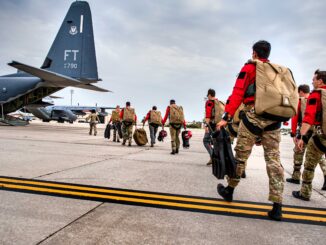 Winter is here. And, as usual, brings usual season characteristics such as snow, low temperatures and ice. They may cause problems in many sectors, but aviation is the one to be particularly sensitive to winter conditions. Even a very small layer of surface frost or ice on the aircraft can severely impact its flight performance.
Winter is here. And, as usual, brings usual season characteristics such as snow, low temperatures and ice. They may cause problems in many sectors, but aviation is the one to be particularly sensitive to winter conditions. Even a very small layer of surface frost or ice on the aircraft can severely impact its flight performance.
Any single surface irregularity caused by ice or snow layer may easily – and critically – change the flight characteristic and interrupt the smoothness of airflow. Frozen water can affect correct operation of control surfaces or even block them completely. During the flight, chunks of ice may break off the aircraft surface and cause damage to engines, control equipment and even the airframe itself.
It should not be forgotten that both snow and ice also add weight to the airframe, negatively affecting the aircraft by decreasing its lift and increasing drag. And last but not least – they may interfere with control sensors, such as pitot tubes, causing them to provide incorrect data for the crew.
History of aviation knows many examples of accidents caused by snow or ice that was not removed from aircraft prior to take-off. Just to mention only a few of them – in 1982, an Air Florida Boeing 737 crashed shortly after take-off, due to improper de-icing, killing 74 people on board and 4 on the ground.
Three years later, an Arrow Air DC-8, performing a charter flight for the US Army, failed to gain altitude after take-off, due to thin layer of ice on its airframe. The aircraft stalled, crashed and then caught fire, killing all 256 people on board.
In 1989, an Air Ontario Fokker F28 crashed shortly after take-off, because its de-icing procedure was skipped, resulting with 24 fatalities. A similar accident occurred in 1992, when a USAir Fokker F28 failed to gain lift due to ice accumulated on the airframe and crashed in Flushing Bay, killing 27 people.
In 1991, a Scandinavian Air System MD-81 flying from Stockholm to Warsaw was forced to perform an emergency landing in Sweden, shortly after leaving Arlanda airport. Once again, ice was the reason. During the flight, it broke off the wings surfaces and was ingested into both engines, causing their failure. Fortunately, this time there was no casualties.


These lessons have been learned, although too starkly and at a cost of many lives. Nowadays, majority of airlines and air forces employ stringent de-icing procedures to avoid issues that may be caused by winter conditions.
There are several modern methods how to remove ice and snow from aeroplanes but the most common one is de-icing procedure based on a special fluid applied to aircraft surfaces. That fluid is usually composed of ethylene or propylene glycol and – depending on the purpose – there are two different kinds of it that may be applied to aircraft surfaces. A Type I fluid removes existing frozen contaminants and that process is commonly known as de-icing. In addition, Type II – IV fluids, that differ in layer thickness, protect the aircraft by prevent icing from re-occurring. And that´s called anti-icing.
Both fluids can be used either separately or within two-step de-icing procedure. Apart from usual maintenance defrosting performed on parked aircraft, the anti-ice fluids are applied before each take-off. Each type of fluids has its own holdover time (HOT) – meaning the time the aircraft can wait from its anti-icing procedure to take-off, with the applied fluid still active. Depending on the fluid type and weather conditions, the HOT can vary from one minute to two hours. If that holdover time is exceeded, the anti-icing procedure must be repeated.
In case of airliners and big military aircraft, both fluids are applied by a specially designed machine – a construction erected at an apron or de-icing truck.
As already mentioned, the de-icing practice applies not only to the airliners but also to military aircraft. Images attached to this article illustrate the ice-removing procedure performed on the United States Air Force KC-135 Stratotankers, assigned to the 185th Air Refuelling Wing, Iowa Air National Guard. Those photographs provide a great opportunity to see process of de-icing up close – and the de-icing truck crew at work, while applying the anti-ice fluid, as well as using hot air blast to remove frozen contaminants from the aircraft surfaces.
All photos were taken on 6th January 2023 in Sioux City, by Senior Master Sgt. Vincent De Groot, US Air National Guard.


Cover photo: Crew chiefs use a de-icing truck to clear ice from a U.S. Air Force KC-135 aircraft assigned to the Iowa Air National Guard’s 185th Air Refueling Wing in Sioux City, Iowa on January 6, 2023. US ANG photo by by Senior Master Sgt. Vincent De Groot. All photos © U.S. Department of Defence (DoD). DoD information materials were used, in compliance with Public Domain licence. The appearance of U.S. Department of Defense visual information does not imply or constitute DoD endorsement.



